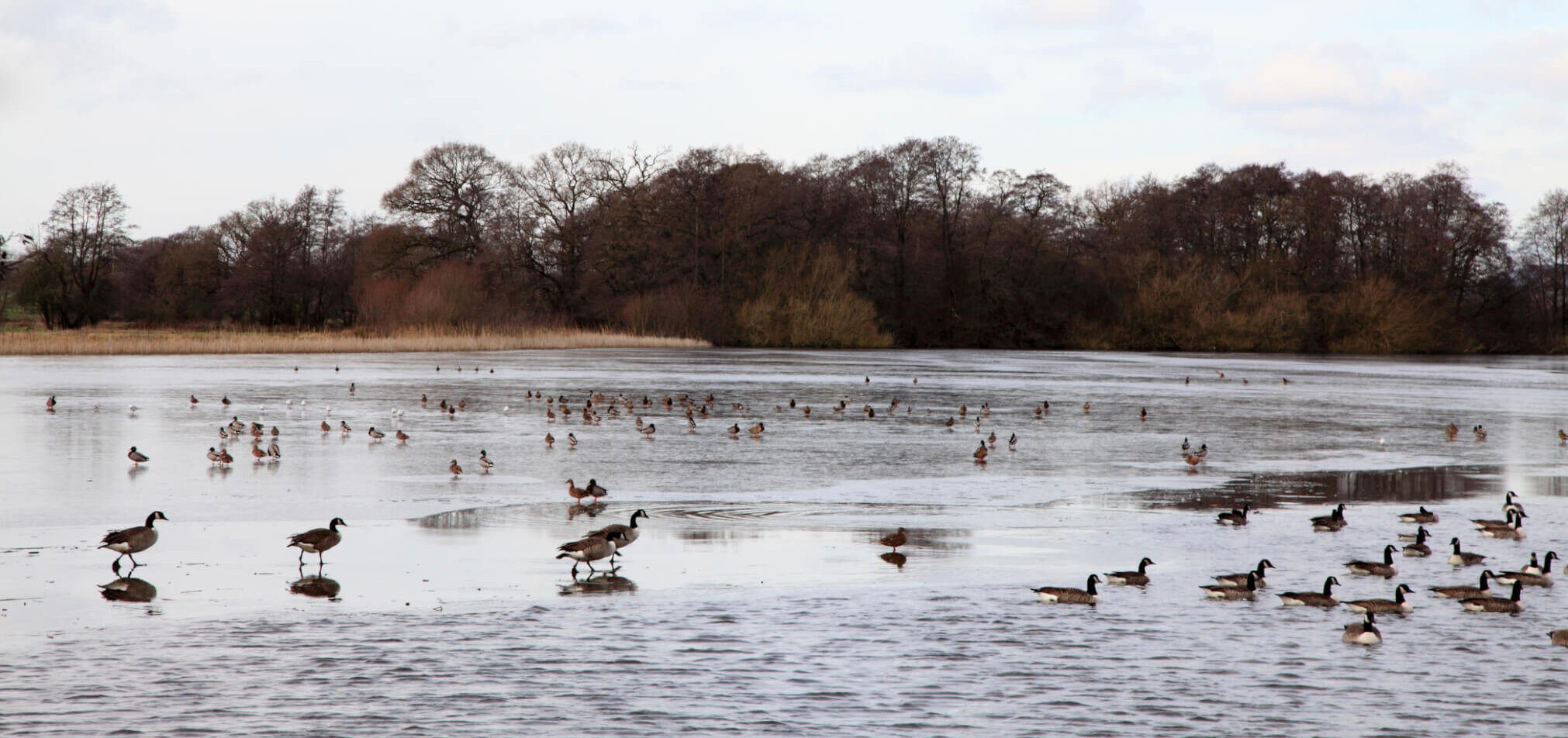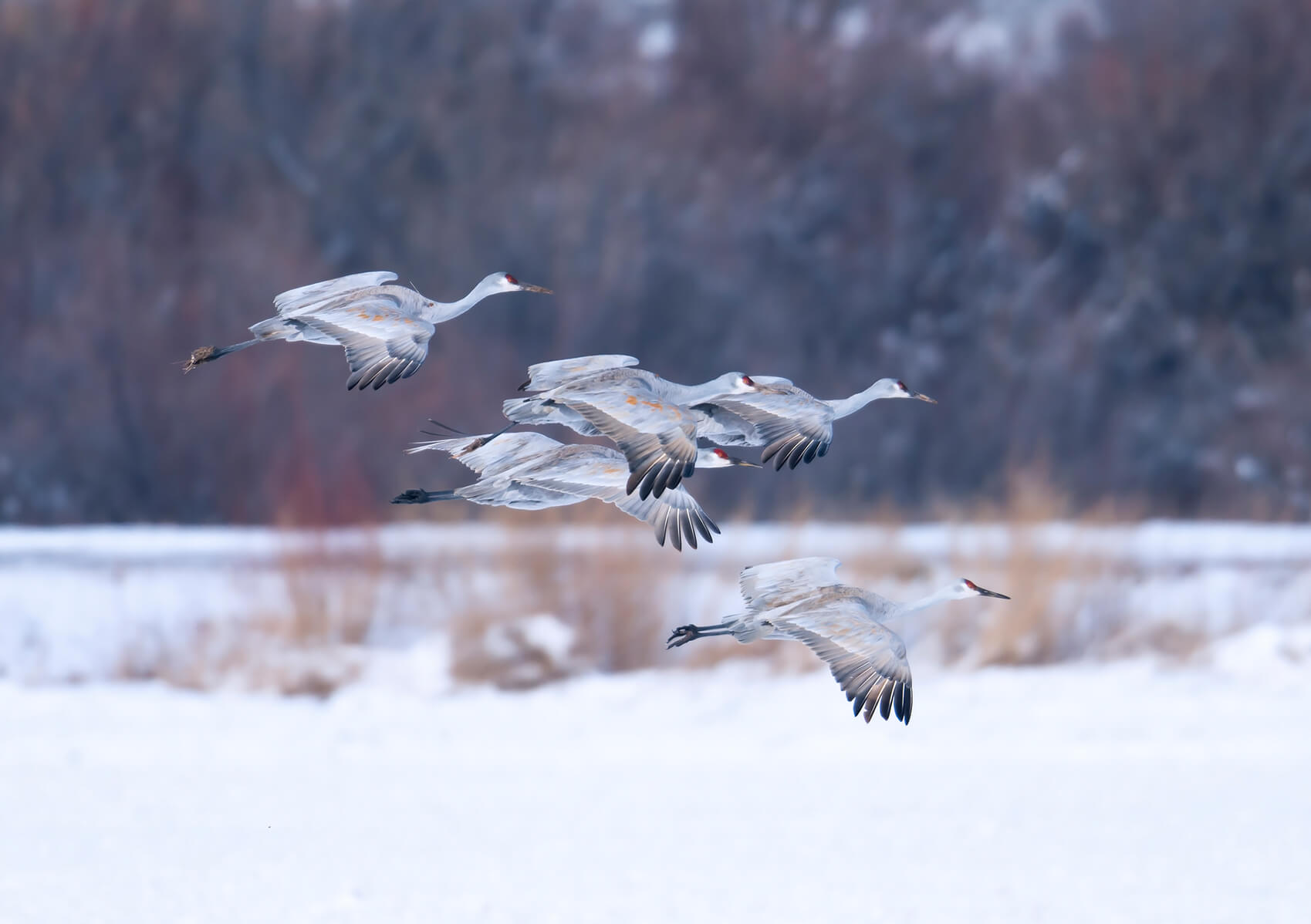M
any birds choose to fly the coop before winter arrives in Indiana, but to some the cold is like water off a duck’s back.
“We have a rich group of birds that spend the winter here in Indiana,” said John “Barny” Dunning, professor of wildlife ecology. “The basic biology of a bird makes them well-adapted to dealing with the cold.”
Feathers are excellent insulators, hence the use of down feathers in vests and pillows. When birds fluff up their feathers, they trap a layer of air close to their skin. Their body heat warms the pocket of air and the structure of their feathers prevents air from escaping into the cold.
The only places where a bird’s skin is directly exposed to the cold are the areas without feathers. These would be the bill, eyes and legs.
“That is why when birds sleep on a cold day, most of them will have their heads tucked under their wings and their feet tucked into the feathers on their belly,” Dunning explained.
Winter winds can complicate the task, but most songbirds do not have issues finding a haven where the wind is blocked.
“They will look for a conifer tree, bushes next to a building or any structure that blocks the wind. But even if the wind blows their feathers off to the side, there can still be enough air trapped to dramatically reduce a bird’s energy needs.”
Like warmth, food can be scarce in the winter. “In the summer, birds like cardinals feed mostly on insects,” said Dunning. “If they are raising young, birds need a good source of protein. In the winter, cardinals and sparrows shift almost entirely to seeds since insects are hard to find. Birdfeeders become an important supplemental food source.”

Diving ducks and loons that feed on fish can be cut off from their food source when water freezes over. To keep the water open as long as possible, waterfowl may swim along the perimeter of the ice, delaying the freeze with their movements. Geese are not dependent on entering the water for food, but they rest in the water for safety. Feral dogs, foxes and coyotes can attack birds on the ice, but they will not venture into the water.
Many of Indiana’s birds, like geese, are partially migratory, basing their travels on the weather. While sandhill cranes used to be fully migratory, they have adapted their strategy as Indiana’s winters have become less severe. “Some spend the winter with us and move south to find open water if there is a sharp change in temperature,” Dunning explained. “When the weather eases, they move back up.”
For Canadian birds, Indiana’s winter is comparatively mild. Some, like Golden-crowned Kinglets, travel south to spend their winter in the Hoosier state despite being among the smallest birds in North America. These tough little birds demonstrate how Indiana takes a wide variety of birds under its wings in the winter.


OMP’s new assistant director a teacher and mentor by nature
The exits along I-65 that release drivers into Tippecanoe County are familiar stopping points for people driving from Chicago to Indianapolis, but for Gary, Indiana native Linnette White, Lafayette was the ultimate stop.
“The journey along I-65 always means a pit stop in Lafayette, but I made the stop once and that was 26 years ago,” White said. “I call it home, and it’s where I raised my family.”
Read Full Story >>>Professor seeks to build academic bridges between scientists
With over 30 years spent at Purdue University, Thomas Hertel, distinguished professor of agricultural economics, has many professional milestones that timestamp his career. The most recent one is the announcement that he has received the Humboldt Research Award by the Alexander von Humboldt Foundation in honor of his career dedicated to researching the global impacts of trade, climate and environmental policies. The award will enable Hertel to spend six months conducting research in Potsdam, Germany.
Read Full Story >>>

